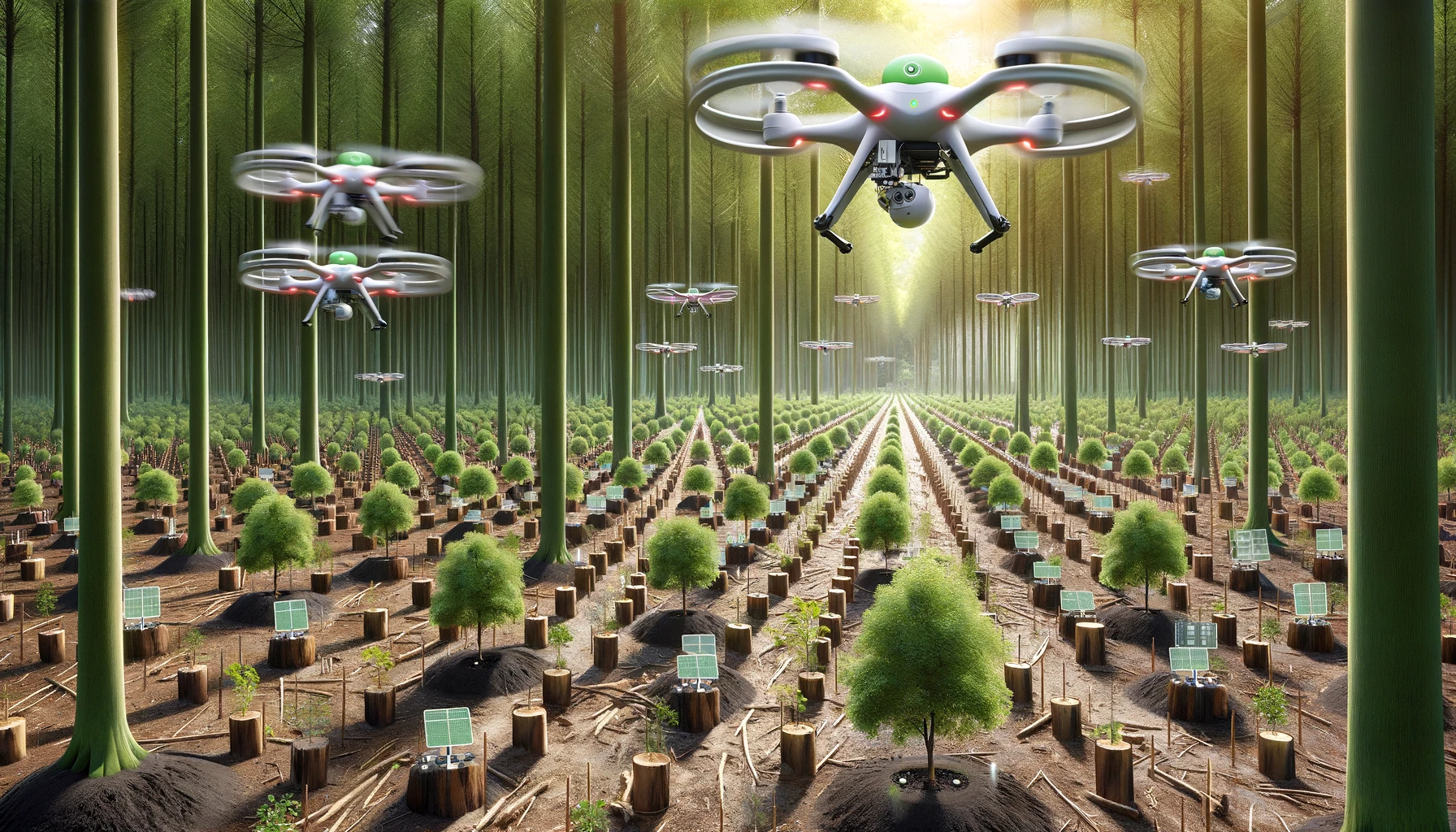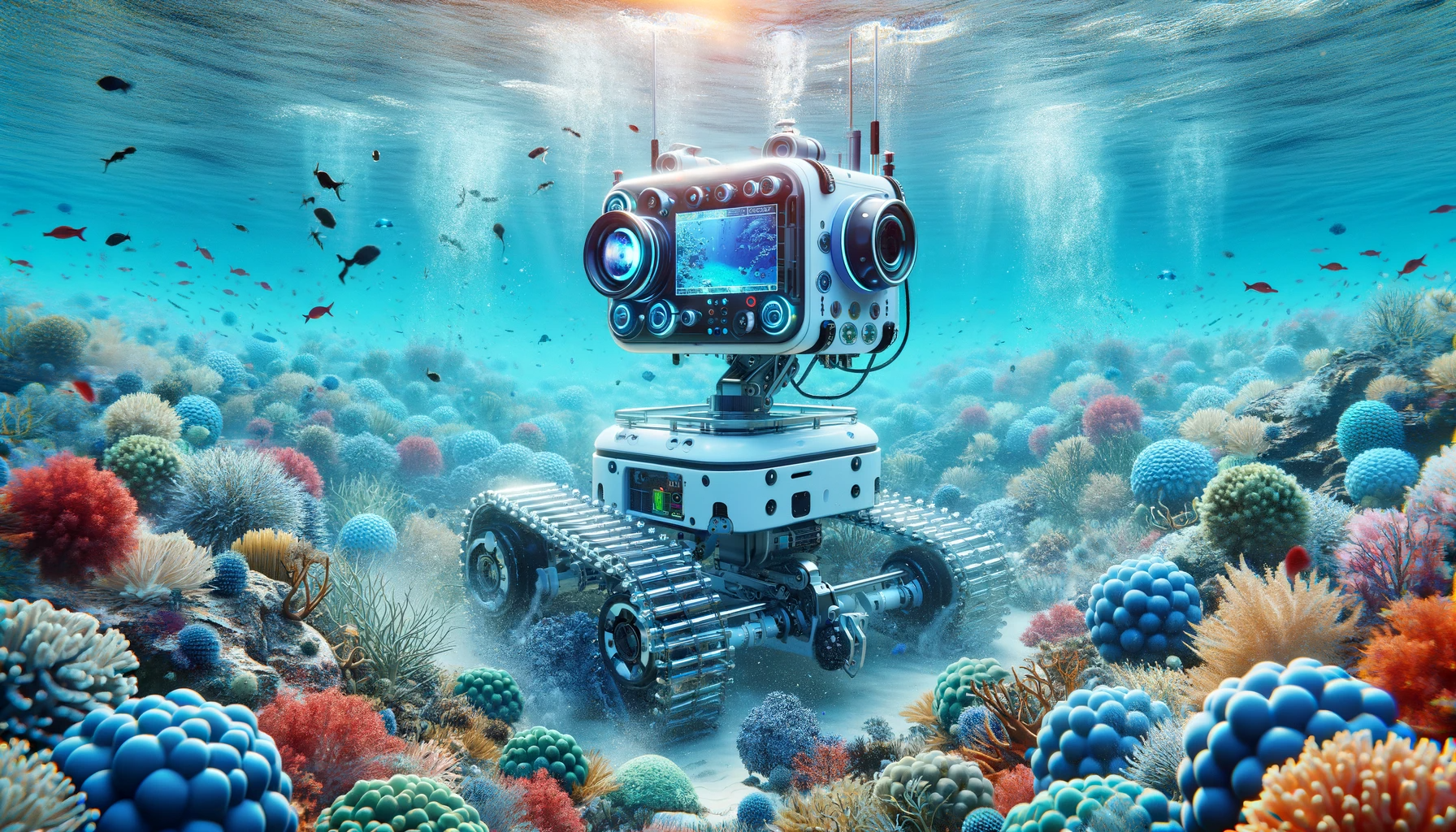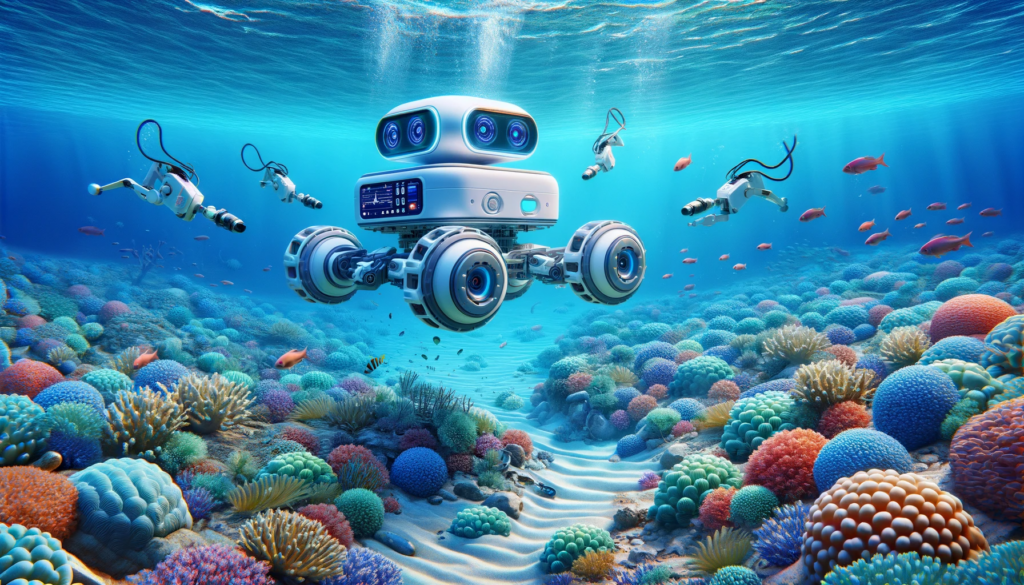Ecosystem preservation and restoration are crucial endeavors in our collective effort to sustain the planet’s health and diversity. An ecosystem, comprising both biotic (living) and abiotic (non-living) components, functions as a complex and dynamic system, playing a vital role in maintaining the balance and health of our environment. The preservation of these systems is not only essential for the wellbeing of wildlife but also pivotal for human survival, providing essential services like clean air, water, and food.
In recent years, the urgency of environmental conservation has been underscored by escalating threats like climate change, pollution, and habitat destruction. These challenges have led to a significant loss in biodiversity and a decline in ecosystem functionality. Addressing these issues requires innovative approaches that can effectively manage and restore ecological balance. This is where Artificial Intelligence (AI) comes in.
This article examines the innovative role of AI in aiding ecosystem restoration and biodiversity protection. It explores how AI, through its advanced data processing and analytical capabilities, is becoming an indispensable tool in environmental conservation efforts. From monitoring vast ecosystems and analyzing environmental data to planning restoration projects and managing natural resources, AI’s applications in this field are vast and transformative.
Understanding Ecosystems and Their Significance
An ecosystem is a community of living organisms in conjunction with the nonliving components of their environment, interacting as a system. These biotic and abiotic elements are linked together through nutrient cycles and energy flows. Ecosystems provide critical services to the Earth, including regulating climate, purifying water, and supporting all life forms.
The importance of ecosystems extends beyond environmental health to human well-being. They are essential for food production, water supply, and the air we breathe. They also have an intrinsic value, contributing to biodiversity by supporting a variety of life forms. However, ecosystems worldwide are under threat due to human activities. Climate change accelerates habitat loss, pollution disrupts ecological balance, and deforestation leads to biodiversity loss. These threats not only impact the environment but also pose significant risks to human health and economies.
Challenges in Ecosystem Conservation
Preserving and restoring ecosystems is a complex and challenging task. Ecosystems are intricate and interconnected, making it difficult to understand their dynamics fully. The complexity lies in the diverse interactions between various species and environmental factors. Predicting how ecosystems respond to different conservation strategies or environmental changes is a significant challenge.
These challenges are compounded by the growing impact of human activities on the environment. Climate change, pollution, and habitat destruction create additional layers of complexity in conservation efforts. Furthermore, there is a need for comprehensive and timely data to make informed decisions, which is often lacking in traditional conservation approaches. These factors highlight the need for innovative solutions that can adapt to the complexities of ecological systems and provide effective strategies for their conservation.

Introduction to AI and Its Relevance to Environmental Science
Artificial Intelligence (AI) encompasses technologies that enable machines to learn from experience, adjust to new inputs, and perform human-like tasks. Key technologies include machine learning, where algorithms use statistical techniques to improve performance on specific tasks, and data analytics, which involves examining large datasets to uncover hidden patterns and insights.
In environmental science, AI has the potential to revolutionize conservation strategies. Its ability to process vast amounts of data and identify patterns can help in understanding complex ecosystem dynamics. AI can assist in predicting environmental changes, analyzing the impact of different conservation strategies, and optimizing resource allocation for ecosystem restoration.
AI’s applications in environmental science are diverse, ranging from wildlife monitoring and habitat analysis to climate modeling and pollution tracking. These applications demonstrate the potential of AI to enhance our understanding of ecosystems and improve conservation efforts.
AI in Ecosystem Monitoring and Analysis
AI plays a pivotal role in ecosystem monitoring and analysis. It can process and analyze large volumes of data from various sources, such as satellite imagery, sensor networks, and field observations. This capability allows for real-time monitoring of ecosystems, providing critical insights into their health and changes.
For instance, AI algorithms can analyze satellite images to track deforestation, monitor the health of coral reefs, or observe the migration patterns of wildlife. These insights are invaluable in understanding the impacts of environmental changes and human activities on ecosystems. AI can also predict future trends, such as the spread of invasive species or the impact of climate change on specific habitats.
Case studies demonstrate AI’s effectiveness in ecosystem monitoring. For example, AI has been used to track elephant populations in Africa, monitor the health of forests in the Amazon, and detect illegal fishing activities in protected marine areas. These applications showcase AI’s potential in providing accurate and timely data for conservation decisions.
AI-Driven Solutions for Ecosystem Restoration
AI aids significantly in planning and implementing ecosystem restoration projects. It can analyze environmental conditions, identify degraded areas, and suggest optimal restoration strategies. AI applications in habitat restoration involve selecting suitable species for reforestation, determining the best planting locations, and monitoring the growth and health of restored areas.
In species conservation, AI can help in identifying critical habitats, tracking animal movements, and assessing population health. This information is vital for developing effective conservation strategies and managing wildlife populations. AI can also assist in managing invasive species by predicting their spread and identifying the most effective control measures.
Examples of AI-driven ecosystem restoration include using machine learning algorithms to restore coral reefs, AI-based models for reforesting burned areas, and AI systems for managing water resources in degraded landscapes. These efforts illustrate how AI can provide innovative solutions for restoring ecosystems and enhancing biodiversity.
AI in Biodiversity Protection and Sustainable Management
AI’s impact on biodiversity conservation and sustainable ecosystem management is significant. It can assist in species identification through image and sound recognition, enabling better monitoring of biodiversity. AI can also track population trends and predict potential threats to species, helping in proactive conservation efforts.
AI’s role in creating sustainable natural resource management practices is crucial. It can optimize the use of resources, reduce environmental impacts, and support the sustainable development of communities. AI can analyze data on resource usage, predict future demands, and suggest strategies for sustainable management.
Case studies of AI in biodiversity protection include using AI to monitor endangered species, such as identifying individual tigers through camera trap images, and AI systems for predicting the impact of climate change on species distribution. These examples demonstrate AI’s potential in safeguarding biodiversity and promoting sustainable ecosystem management.
Challenges and Ethical Considerations in Using AI for Conservation
Implementing AI in environmental conservation presents several challenges and ethical considerations. Technical challenges include data quality and availability, algorithmic biases, and the integration of AI systems with existing conservation practices. There are also logistical challenges, such as deploying AI technologies in remote or harsh environments.
Ethical considerations revolve around the impact of AI on natural habitats and the potential for unintended consequences. There are concerns about data privacy and the use of surveillance technologies in conservation. Additionally, there is a debate over the balance between technological interventions and preserving the natural dynamics of ecosystems.
These challenges and considerations highlight the need for careful planning and ethical guidelines in using AI for conservation. Collaborative efforts between technologists, conservationists, and local communities are essential to address these issues and ensure that AI contributes positively to environmental conservation.

Conclusion
In conclusion, AI offers groundbreaking potential in assisting ecosystem preservation and restoration. Its ability to analyze complex environmental data, predict ecological changes, and optimize conservation strategies makes it a valuable tool in environmental conservation efforts. AI’s applications in ecosystem monitoring, restoration, and biodiversity protection demonstrate its transformative impact on this field.
However, the implementation of AI in conservation must navigate technical and ethical challenges. Balancing technological innovation with natural ecosystem processes is crucial to ensure that AI’s contributions are sustainable and beneficial. Looking ahead, the future of AI in supporting sustainable ecological practices appears promising, with the potential to play a pivotal role in global conservation efforts. As technology continues to evolve, AI’s role in preserving and restoring our planet’s ecosystems will likely become increasingly significant, offering new solutions and hope for a sustainable future.
